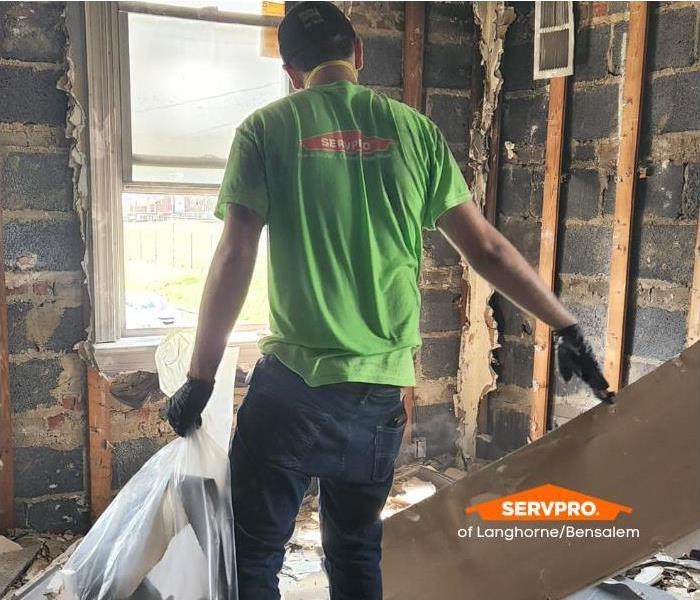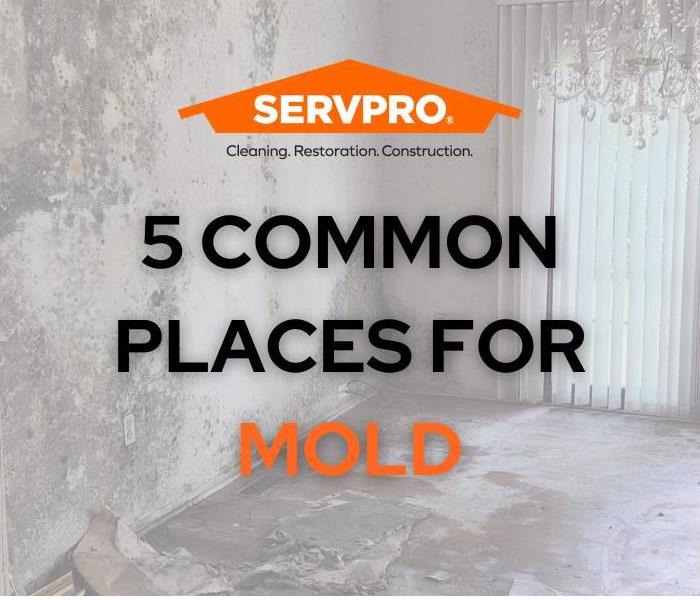Recent Water Damage Posts
What To Do Before, During and After Water Damage in Langhorne
9/19/2022 (Permalink)
We cannot control Mother Nature; when she hits Langhorne area, we need to make sure we are ready to go for whatever damage she leaves behind. We can’t control the weather but we can control what we do to prepare for the before, during and after water damage.
Here are the things you should do before, during and after water damage to make the remediation process easy for you.
BEFORE:
- Make a list of all the things you own; furniture, clothing, valuables
- Fill out a Family Emergency Plan (list of all emergency contacts), or if you are a business owner/property owner - fill out our Emergency Ready Plan.
- Have a To-Go Bag that you can grab if you are rushing out in a hurry
- Be aware of what your insurance company covers when damage unexpectedly hits your home or business
DURING:
- Turn off water valves and electricity circuits
- Call you insurance company to file a claim
- Stay away from any flood water whether it’s from a storm or a leaking pipe. You’re unfamiliar with where the water came from.
- Call your SERVPRO of Langhorne/Bensalem, give them the insurance claim number. After communicating with the insurance company, our crews will be dispatched out to your home to assess the situation and discuss next steps.
AFTER:
- Depending on the damage will determine what happens after the damage is assessed by our professionals. We take pride in making sure the water damage remediation process is as smooth as possible for our customers.
Flooding is the most common U.S. natural disaster, and Pennsylvania has the highest flooding rate of any state.
If your home or business is suffering from water damage, don’t hesitate to call SERVPRO of Society Hill now at 215-245-4855.
Life Cycle of Mold
7/11/2022 (Permalink)
SERVPRO of Langhorne/Bensalem dressed in head to toe Tyvek suits, responded to a call of a vacant house saturated in mold. The vacant home suffered a leaking pipe in the bathroom causing moisture to build up. Because the home was vacant for two months, the mold grew throughout the entire house.
Here are 5 common places in your house where mold grows.
- ATTIC: mold grows from the accumulation of moisture condensation in the gap between your warm house and the cold weather outside. Getting the proper insulation will reduce the amount of condensation.
- HVAC & AIR DUCTS: A warm location with high water vapor content is particularly prone to mold buildup within the ducts. It forms the most conducive environment for mold growth.
- INSIDE WALLS
- BATHROOMS
- CRAWL SPACE
SERVPRO of Langhorne/Bensalem found out quickly that this mold grew in ALL 5 of these places and then some. Our mitigation team came in and tore down the walls to the studs. The insurance company needed to inspect the house prior to reconstruction to decide what our next steps would be in the rebuilding process.
If you suspect there is mold in your house, talking to a SERVPRO professional is the most effective course of action. Based on moisture levels in the affected area, our professionals will be able to tell you if a simple cleaning would work or if you need immediate remediation. Call us today for a quote!
Hurricane Season Preparation Tips
5/13/2022 (Permalink)
 SERVPRO: Faster to Any Disaster
SERVPRO: Faster to Any Disaster
Hurricanes bring numerous threats to life and property each Hurricane season. With June 1st just around the corner, now is the time to prepare your home and family. Follow these Hurricane tips:
Develop an evacuation plan. Check your county’s website to find out if you live in an evacuation zone. Select a safety destination and plan several alternate routes.
Determine your flood risk. FEMA’s Flood Map Service is a free online tool for determining your property’s flood risk by zip code or street address.
Assemble a supply kit. Prepare enough nonperishable food, water, and medicine to last each person in your family a minimum of three days (or longer, if space allows).
Review your insurance policy. Contact your provider to check your coverage. Homeowner’s insurance does not cover flooding. Many providers offer separate flood insurance.
Prepare and strengthen your home. Simple upgrades and retrofits can be inexpensive and may help you protect your home and minimize potential damage.
SERVPRO of Langhorne/Bensalem has helped PA homeowners recover from storm damage for more than a decade. Call the professionals at 215-245-4855 for emergency storm response services.
Ways to Secure Your Home during a Flood
3/1/2022 (Permalink)
Ways to Secure Your Home during a Flood
The last thing you want to worry about when there is a flood in your area is whether or not your home will be safe. Floods can happen anywhere and at any time, so it's important to take precautions beforehand to make sure that you are fully prepared for the worst. That being said, here are some ways you can secure your house during a flood:
Grade your lawn away from the house
If you have a slope in your lawn leading up to the house then this will make it easier for water to enter. Take some time before the flood season begins and grade your yard away from your home so that there is less chance of water collecting around your foundation.
Install window well covers
Floods tend to happen quickly, which means that if there's anything obstructing windows on lower levels (like window wells) - they could prevent people inside the home from getting out safely when needed. To avoid any potential risks or problems, install window well covers that can be removed easily by anyone who needs them during an emergency situation. This way everyone stays safe while waiting for rescue teams arrive!
Create sand bags
Sandbags are great because they can be taken down and put back up again as many times as you need them, which is perfect if there's a flood season that follows multiple storms. When first approaching your home during a flood it might look like the only thing left to do is abandon ship in favor of higher ground - but by creating sand bags around entry points (like doors) you'll greatly reduce the possibility of flooding in the home when things finally start to recede.
Leave space between siding & mulch
In severe cases, flooding can even cause mulch to start decomposing which is a major risk for mold as well as other health problems. In order to avoid these risks, leave about an inch of space around the base of your house so that water has room to flow away from it instead of collecting at its foundation. This will reduce chances of damage and ensure that everyone inside remains safe during a flood!
Block All Entrances and leave no space for the water to come in
Make sure there is no space for the water to collect around your home's foundation or windows and doors. Put anything you can find to block entrances in front of all doorways. It is important that you do not allow any gaps between items as this will encourage flooding into the house when it occurs again. This also includes allowing plenty of room around windows so that they are able to open safely during an emergency situation! If possible - leave at least a foot gap from siding on the side of your house nearest where flood waters are likely to enter (like near garage doors) so that everyone inside has enough time to escape if necessary before water rises too high within the home.
Blanket all windows with plastic sheeting so the water cannot sleep in.
Once you have blocked off entrances, it is important to protect any openings that are left vulnerable by covering them up as much as possible. If there are glass windows on your home - use plastic sheeting or tarps over top of these until the flood waters subside and remove once problem has been averted! High winds can cause this material to fly away during a storm making it even more vital that everyone inside knows how best to secure their house properly before things get out of hand! Make sure all roof vents are securely covered just like other unprotected areas around your home's exterior too if at all possible because anything not protected will be especially susceptible during floods.
How to Stop Water from Entering Your House during a Flood
12/29/2021 (Permalink)
A flood is a natural disaster that can devastate your home. There are many ways to prevent this from happening, but one of the best is simply by getting a watertight door for your house. This will keep the water out and allow you to rest easy knowing that you won't be losing everything in the process. In this blog post, we will talk about how to stop water from entering your house during a flood!
Let’s take a look at some ways you can stop the water from entering inside your house.
Flood Prevention Door and Windows
The first thing you will need to do is find a door that has been specifically designed for flood prevention. These doors are designed to keep out water, but they can also be used as regular storm protection if needed! This means that it's the best of both worlds and you won't have to worry about sacrificing functionality. It should come with an airtight seal, so you can keep the water out for good. Make sure that your door is properly attached to its frame! You will need screws or bolts in order to do this. This way it won't be able to shift around with all of the pressure from the flood waters outside and end up letting them seep into your house anyway. It's also a smart idea to apply an extra layer of protection using waterproof caulk too! A little bit goes a long way here since you'll want as much resistance against water as possible.
Keep the Foundations A Little Higher When Getting the House Built
It's also important that the foundations of your home are a little higher. You will want to place them about six inches above where they would normally sit so that any water coming in can't reach up high enough to seep through anyway. This is because even if all of the other precautions were taken when building your house, this one simple step could save everything from being swept away during heavy rainfall or flooding conditions! Just remember not to make the foundations too tall either since they need certain levels of support for stability reasons as well.
Sump Pumps
The sump pumps are another thing to consider, as you will want these draining out properly so nothing gets backed up either way. If water can't escape your house, it's going to start pooling around indoors instead which could mean a whole lot more damage in some cases especially once flooding becomes involved at all. You might even consider adding an extra one or two just for good measure since heavy rainfall tends to increase over time as well no matter what kind of area you live in.
Once you have finished applying these flood prevention methods, your house should be completely sealed and ready to go!
How to Pick a Water Damage Restoration Company
12/1/2021 (Permalink)
Are you looking for a water damage restoration company? If so, then this blog post is for you! There are many factors to consider when hiring a water damage restoration company. Understanding these questions before making your decision will ensure that the right choice is made and all of your needs are met. Check out our helpful tips below to find out more about what questions to ask and how to make an informed decision on which company to hire.
See If the Company is certified
Get a quote from the company that you have chosen. Check their license number to ensure they have insurance coverage in case something goes wrong during restoration services. If you can’t get an estimate on site then ask for one over the phone or email before hiring them so that there will be no surprise fees at the end of it all! Be sure to do some research into every company by looking up their reviews (be wary of Yelp). Read consumer reports online where other people who were satisfied with these companies leave feedback about their experiences. The more information out there means better chances of finding someone reliable!
Check the online reviews
See what other people are saying about the company. If you’re not sure who to hire, check out the reviews and ratings of each company. This can help guide your decision when trying to find a water damage restoration company in your area! The more positive feedback that is found online about the business means it will be much easier for you to choose them. You should always try and set up an appointment with these companies so they can give you better estimates on how long it will take to get this task done as well as their rates. If possible try and do some research into what other people have said beforehand too because then there won't be any surprises at the end of this process!
Check Out Their Reputation
It is important that we know where our money goes after hiring someone. We can look up the company's license number to see if they are insured. If you aren't able to get an estimate on site, ask for one over email or phone before hiring them so that there will be no surprise fees at the end of it all! Do some research into every company by looking up their reviews (be wary of Yelp). You should also check out consumer reports online where other people who were satisfied with these companies leave feedback about their experiences. The more information out there means better chances of finding someone reliable!
Check if they have insurance coverage in case something goes wrong during restoration services
See if the company is insured so in case there is any problem during the restoration process the insurance can take care of it. This is why it is very important to always hire an insured damage restoration company.
How to Save Your Belongings from Water Damage
10/12/2021 (Permalink)
How to Save Your Belongings from Water Damage
Water damage can be a really scary thing to experience. What do you do if your belongings get wet and moldy? The answer is simple: don't panic! We have put together this blog post to help give you some tips and tricks for saving your possessions from water damage. Read on for more information about what to do in the event of a flood, how to prevent water damage, and more.
Keep Your Valuable at a High Point during a Flood
During a flood, the first thing you are likely to think about is what valuables can be saved. If there isn't an immediate threat of your home being flooded, try moving them to higher points in order to keep them safe from water damage. The main things that should be moved would be anything digital or electronic-based because these could easily become destroyed by moisture in the air. You also want to make sure any important documents and photos are kept out of harm's way since they contain sensitive information which needs protecting! Keeping items at high points will help ensure they stay dry during a flood so don't forget this step if one becomes imminent!
Seal Your Belongings in Zip lock Bags before Putting Them Away
If you feel like there's a chance of your belongings getting wet, it is important to seal them up in zip lock bags before putting them away. This will help ensure they stay dry during the flood and any furniture or other items won't get damaged by moisture either! If something does happen, at least you can be more confident that your valuables are safe inside their packaging.
Remove All Your Belongings from the Basement
If you have a basement, it is best to remove all your belongings from that area. This might seem like an extreme way of preventing water damage, but basements are known for being susceptible to flooding so there's no point in taking any risks! If you don't want anything getting wet or damaged because of the flood, this is one simple step which will go a long way toward keeping everything nice and dry during the event.
Avoid Keeping Anything outside the House during Flood Warning
If you live in a flood-prone area, it is best to avoid keeping anything outside the house during a flood warning. This means that if you have something like an outdoor fridge or freezer, leave them where they are because there's no point putting your belongings at risk of being damaged by water. If the items do get wet and moldy, you will still be able to use them but discarding them might not even be necessary!
Don’t Put Your Furniture near Pipes or Drainage Systems
If you have a lot of furniture in the house, it is best to put them away from pipes or drainage systems. If they get wet, these items can cause water damage and moldy smells within your home which no one wants! Try placing all heavy pieces further back against walls where they won't be near anything that will cause problems when there's a flood. This simple step could save several possessions from being damaged by moisture during floods so make sure any big pieces are kept well clear of problem areas!
What To Do After Your Toilet Overflows
7/13/2021 (Permalink)
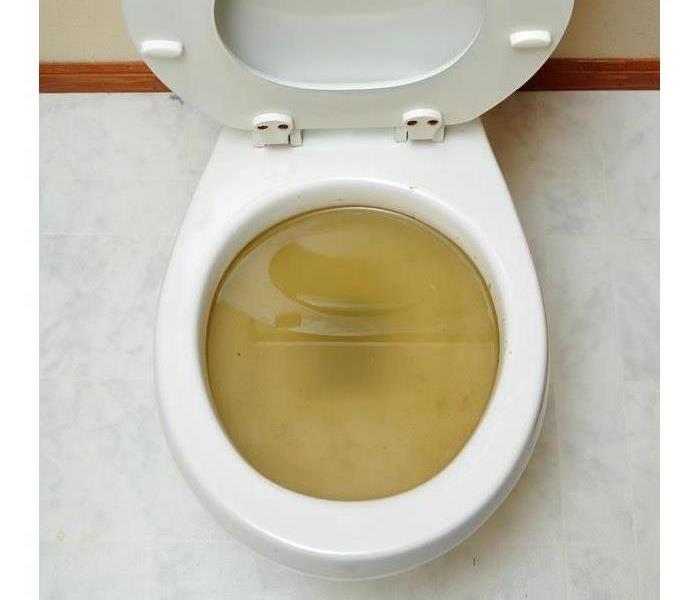 Overflowing toilet
Overflowing toilet
What To Do After Your Toilet Overflows
Indoor plumbing is a wonderful amenity that most of the world has become accustomed to — and very grateful for — but that doesn’t mean it’s a flawless system. Sometimes you’ll find yourself dealing with a flooded toilet, which can be the result of a minor clog or even major sewer damage. No matter what problems you’re experiencing, it’s good to know what to do to minimize the potential damage to your home in Cornwells Heights, PA after your toilet spills over.
A Simple Clogged Toilet
Most of the time, the issue is simply a small clog, and you’ll probably be able to take care of it with a plunger. If the toilet is currently overflowing, the first thing you’ll want to do is shut off the water supply using the valve that's usually found just behind the toilet. If you can’t find this, open the water tank and rig the float into a position that allows it to stay in place so no more water flows in.
Any water that made it to the floor is contaminated, especially if it’s from a bigger sewer backup. It’s very important to clean this up and disinfect the area, then disinfect any rags used for the cleanup.
Major Sewer Damage
If it seems like the toilet is still clogged or wants to keep overflowing, there’s a chance the clog is larger and deeper in the pipes. Alternately, there may be damage down below, such as a break or crack in the sewer system.
If you’re experiencing more serious sewer damage, the kind that can't be remedied with a plunger and elbow grease, it will more than likely become worse over time; it is definitely not a problem to put off. Contaminated water can back up not only into your toilets, but also into sinks, bathtubs, and showers, which can become a health hazard for you and your family. Contacting your local sewage system experts to diagnose and fix your sewer problems will give you peace of mind and prevent more costly damage from occurring in your home.
Is Your Home Affected With Category 3 Water? Here Is How To Find Out
3/22/2021 (Permalink)
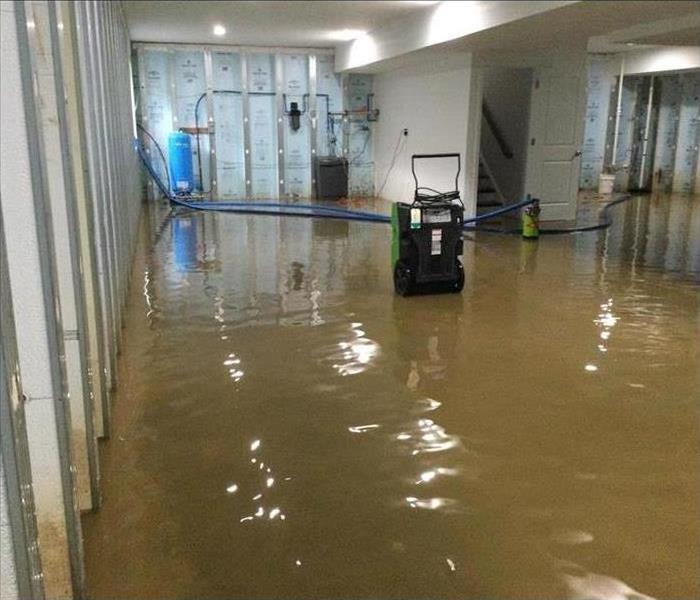 Flooded basement in an Oakford, PA residential home.
Flooded basement in an Oakford, PA residential home.
Not all water is the same. Authorities class the fluid into three categories, clean, gray and black water. These degrees have to do with the hazardous impact of the fluid and how they enter the premises. While homeowners in Oakford, PA, shouldn't want to suffer from any of these to infiltrate the property, the last one is of utmost concern, requiring thorough and meticulous cleanup. Here is how to know if you have dirty water in your home and how to clean it.
Where Did the Water Come From?
When you start to evaluate your flood impact, think about the following factors to determine if you require sewage cleanup:
- Where did the water originate?
- Could it contain bacteria?
- What is the level of possible contamination?
A busted clean pipeline is unlikely to bring in harmful microorganisms. The dampness could trigger mold, but it isn't introducing any waste product. A gray line occurs from an indoor leak, often an appliance. Washing machines and dishwashers have hoses that carry away the dirty water. This fluid houses food and organisms. While not overly fraught with bacteria, cleaning is needed.
Black water arises from places that have human waste, animals or dirt. The impact from an external water source such as the ocean, river, or sewer line falls under this zone. Leaving category 2 water alone, such as in standing puddles or without proper cleanup, may also turn into this group as bacterial levels fester and spread.
What Can Owners Do About This Concern?
When category 3 breaches the home, immediately contact a water and sewage restoration company. Specialists should assess moisture saturation and contamination, taking samples from the walls and air, determining the type and extent of the flooding. Then, the team puts together an action plan to restore the residence using scientific studies and awareness.
The crew evaluates porous and nonporous materials, dictating what may be salvaged and what must go. They set to work reducing the humidity levels and securing the rooms from further harm.
Don't ignore black water. Because of its hazardous nature, it's prudent to work with professionals to sanitize the home quickly and effectively.
Common Water Issues In Commercial Buildings
2/16/2021 (Permalink)
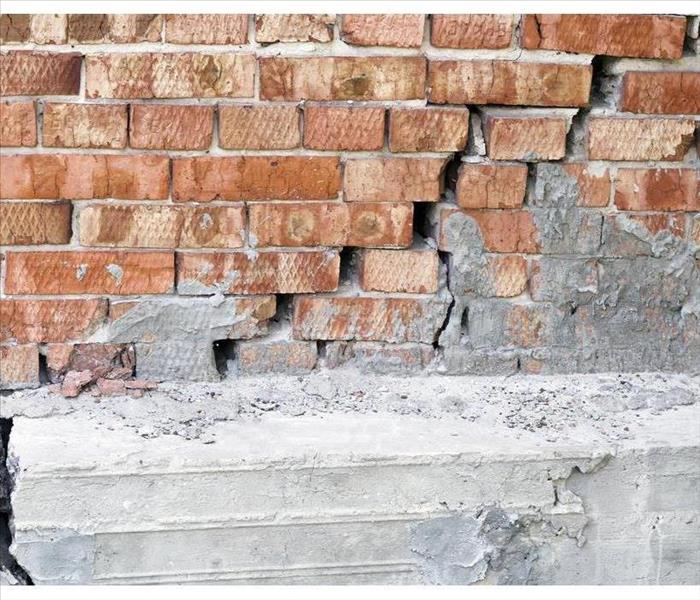 A damaged building foundation can cause a damaged plumbing system or other plumbing issues.
A damaged building foundation can cause a damaged plumbing system or other plumbing issues.
Three Of The Most Common Water Issues For Commercial Buildings
If you own a commercial building in Woodbourne, PA, there are many things you need to keep in mind to keep your building and employees safe. One of the most common causes of building damage is water damage such as leaking pipes. This type of water damage is preventable if you know the signs of common water problems.
1. Foundation Problems
If your commercial building's foundation is damaged, it can lead to major issues, especially if you do not address it promptly. Foundation issues caused by plumbing problems can cause drainage issues and soil displacement. These are issues that can cause your building's foundation to shift, crack or otherwise become damaged. A damaged building foundation can cause a damaged plumbing system or other plumbing issues. It may also lead to a loss of structural integrity, leaving your building vulnerable to further issues such as ceiling or wall cracks.
2. Deteriorated Sewer Lines
If your building has cast-iron sewer lines, you should be on the lookout for deterioration, excessive wear, or failure of these lines. A sewer line issue can present itself in many ways, including gas odors in the sewer or excessive drain clogging such as toilet backup or leaking pipes. Additionally, unusual indentation and deformation in landscape areas of your building can indicate a sewage problem. If you suspect that your commercial building has deteriorated sewer lines, you should call in an emergency water damage company to fix this issue before it becomes a bigger problem, as leaving deteriorated sewer lines can cause further issues down the line.
3. Water Pipe Damage
A pipe break, burst pipe, or leak can quickly become a costly issue. By dealing with this issue promptly, you can avoid the consequences of water pipe damage such as damaged walls, floors, or ceilings. Additionally, leaving these problems unattended makes your building vulnerable to mold and mildew. Be on the lookout for signs of leaking pipes, such as bulging walls or water stains.
It's important to act quickly if you notice any type of water issue to prevent lasting damages and call in a professional water restoration company.
Preserving Your Memories After Flooding
1/13/2021 (Permalink)
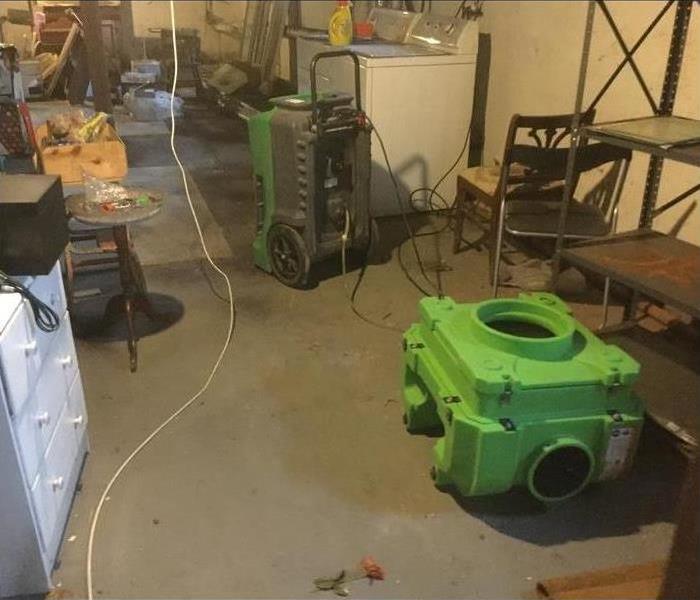 Water damage restoration in Feasterville, PA
Water damage restoration in Feasterville, PA
Preserving Your Memories After Flooding
Water in the home can be a terribly destructive force. Not only can it cause damage to the structure of your home, but it poses a great risk to your possessions. While many items are replaceable, the restoration of heirlooms, photographs, and documents can be the longest and hardest part of the recovery process. Salvaging these begins with cleaning the items, then drying them, and sanitizing if needed. Sanitizing can be required if the water is contaminated but is usually not necessary if the water came from a clean source like a broken pipe. Cleaning is largely limited to wet cleaning — rinsing or immersing in water and cleaner — and dry cleaning for fabrics and textiles. Drying is the most important part of the process for preserving the longevity of the items, and can be done in several ways:
- Dehumidification
- Vacuum Thermal Drying
- Vacuum Freeze Drying
- Air Drying
All but the last require specialized equipment and should be done by a trained restoration specialist in Feasterville, PA.
Air Drying
Air drying is accessible for most people after discovering water in the home. It can be done indoors, with fans and good air circulation. It is important to properly support any fragile documents during this process, so they are often laid out on or packed with an absorbent fabric. It is important not to do this outdoors, as temperature fluctuations and sunlight can cause further damage. Consumer dehumidifiers can help speed this process as well. Many items can be air-dried without loss of integrity, but it is very important to ensure they are completely dry before packaging for storage.
The aftermath of unexpected water in the home can be a chaotic time, and the hardest part can be worrying about your prized possessions. With knowledge of the options for cleaning and drying, you can alleviate some of the stress of the recovery effort.
Three Common Places for Toilet Leaks
12/1/2020 (Permalink)
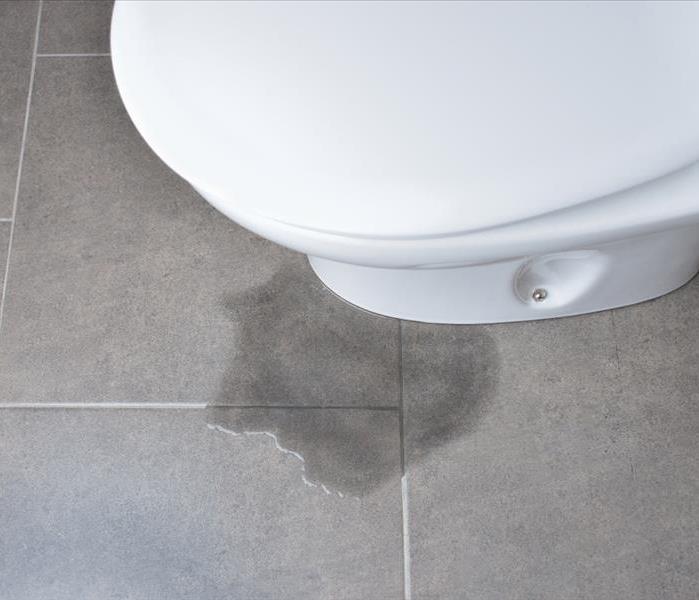 Toilet leaks can cause damage in your home
Toilet leaks can cause damage in your home
Three Common Places for Toilet Leaks
Toilets are highly reliable household appliances that could last up to 40 years. It is no wonder that toilet parts can become worn and develop leaks. In most instances, a leaking toilet can be fixed by simply replacing a few parts. Where you find the leak will help you determine what parts need replacing. Here are three common places homeowners in Fox Chase, PA, find toilet leaks:
Leaking From the Base
If the toilet is leaking from the base, it could signal:
- A broken wax seal
- Loose closet bolts
- Cracks on the toilet bowl
The wax seal keeps water from seeping out of the pipes when you flush. This can be replaced with a few tools. Likewise, loosened closest bolts can be tightened easily with a wrench. If it is small enough, a crack on the toilet bowl can be fixed with a porcelain sealant.
Leaking From the Shut-off Valve
A leaking shut-off valve can cause water to puddle around the base of the toilet if the packing nut has become loosened. To fix this, simply find the packing nut under the handle and tighten it with a wrench. If this does not stop the leaking, the shut-off valve must be replaced.
Running Inside of the Tank
A toilet that continues to run after it has finished filling the toilet bowl indicates a misadjusted float, a tangled chain, or a broken flapper. If you are experiencing this with your toilet, first check that the float is not adjusted too high. If you find that the float is set up properly, check that the chain is untangled and allowing the flapper to close. If water continues to run after readjusting the float and the chain, you should replace the flapper entirely.
Water damage caused by a bathroom or toilet leak is an attraction for mold and can ruin your flooring. If you have water damages in your home due to a bathroom leak, contact a water damage cleaning and restoration service to repair it.
4 Signs You Have a Leaky Shower
10/6/2020 (Permalink)
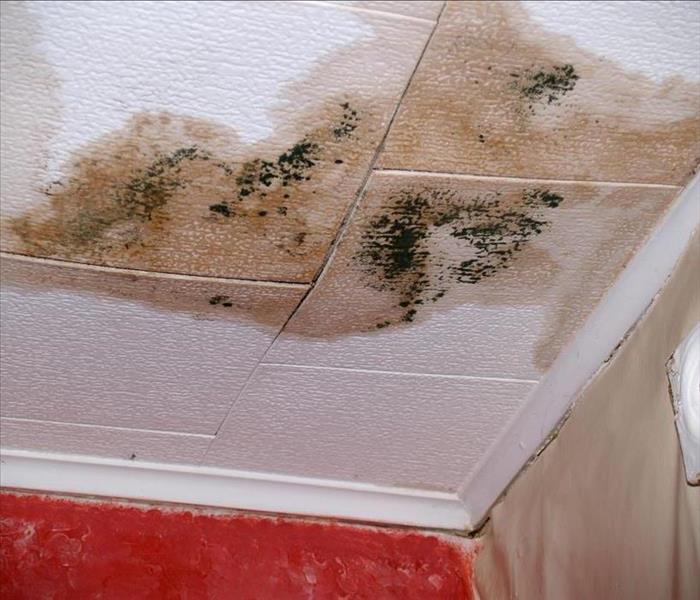 Stained ceiling in a Penndel, PA bathroom
Stained ceiling in a Penndel, PA bathroom
Indicators That Can Help If You Suspect You Might Have a Leaky Shower
A shower or bathtub leak might seem like a relatively insignificant issue, but it can actually cause catastrophic damage if left untreated for too long. Unchecked water damage can cause subsequent issues, such as flooding and unwanted mold growth. Check your home in Penndel, PA, for the following indicators if you suspect that you might have a leaky shower.
1. Stained or Warped Ceilings
Before you head into the bathroom to begin your investigation, check the ceilings on the floor directly below your shower or bathtub. Any brown, coffee-colored stains on the ceilings are indicative of water damage. In extreme cases, you may notice that your ceiling is warped or bulging. This is a sign that water is accumulating in your ceiling and you need to contact professional help immediately.
2. Damaged Bathroom Walls
Look at your bathroom walls for similar signs of damage. You might notice that the paint or wallpaper is beginning to chip or peel, which is indicative of water damage caused by a shower or bathtub leak. Again, if your walls are bulging or warped, contact professional assistance as soon as possible.
3. Cracked or Broken Bathroom Floor Tiles
Your bathroom comes into frequent contact with water, so your floor tiles are naturally able to withstand moderate amounts of moisture. Any cracked or otherwise broken bathroom floor tiles are a sign that you might have a shower pan leak.
4. Mold or Mildew Growth
Mold and mildew both love moist environments, and it's not uncommon to find them growing in your bathroom from time to time. While occasional mold growth isn't necessarily indicative of a larger issue, you might want to investigate the problem if you notice that the fungus has been reappearing regularly.
A shower or bathtub leak is not an issue that should be taken lightly. You need to take immediate action if you notice one or more of the above water damage indicators. Contact water remediation professionals for help diagnosing and resolving the issue.
Tips on Troubleshooting Your Commercial Irrigation System
9/5/2020 (Permalink)
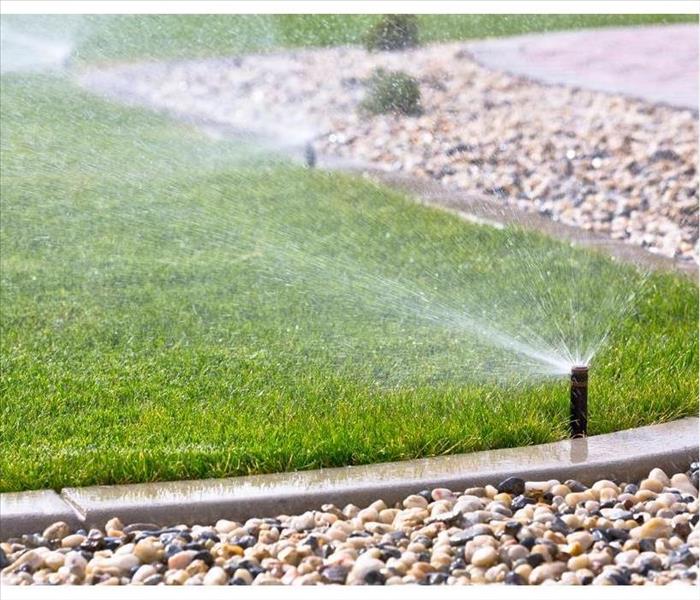 Check the irrigation system at your property
Check the irrigation system at your property
The irrigation system at your facility plays an important part in keeping your property aesthetically pleasing. Since a professional-looking property is inviting to visitors and prospective customers, you want to make sure your sprinkler system is working at top capacity. There are a few potential irrigation problems that can occur over time, so it's helpful to know a few troubleshooting tips.
Controller Doesn't Function Properly
If the water doesn't begin to spray when you turn on the system, a faulty controller may be the issue. Each spring before you turn on your sprinkler system in Bensalem, PA, make sure that all of the wires connected to the controller are in excellent condition. The wires inside the valve boxes should also be inspected, since they are the most prone to weather damage.
Water Pressure Is Too Low or Too High
In the case of low water pressure, make sure there isn't any blockage in or around the sprinkler head. If there isn't, you may have an underground leak that requires a professional to inspect.
If sprinkler heads begin to mist rather than spray a constant flow of water, this could indicate water pressure that is too high. If the pressure is too high, it can wear out the irrigation system quickly.
Sprinkler heads that help regulate water pressure are available if pressure is an issue.
Sprinkler Head Won't Pop Up
There may be something preventing the sprinkler head from popping up. Inspect for dirt or debris causing the head to stick.
Water Accumulates on the Lawn
Water that pools on the lawn can indicate a leak in the system, but improper drainage may also be the problem. If adjusting the watering schedule doesn't solve the problem, you should call a professional water repair service as soon as possible to avoid further water damage to the property.
Check the irrigation system at your property periodically so that it works at maximum efficiency.
How SERVPRO Helps Companies After Basement Floods
7/11/2020 (Permalink)
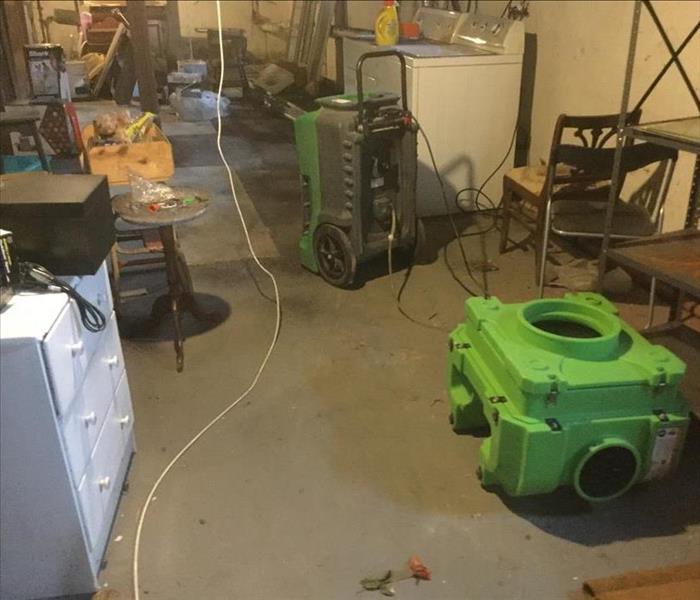 Water Damage Restoration in Bensalem, PA
Water Damage Restoration in Bensalem, PA
A basement flood can cause lots of damage to a commercial building in Bensalem, PA. Your clients will use their insurance coverage to pay for emergency restoration services. However, it is up to you to decide which cleanup company your clients use.
You should choose a restoration business with both corporate reach and local franchises that understand the challenges of a particular city. SERVPRO fits this description. In fact, it is a preferred vendor for most insurance agencies.
SERVPRO experts have the necessary experience to remove water from a flooded basement safely and efficiently. Here are the steps they follow:
1. Drain the Water
SERVPRO professionals know that a basement flood can be dangerous if it is not handled properly. If the water is higher than the outlets in the basement, electrocution could occur. The experts use a vacuum or pump to remove the water while staying outside the basement until it is safe to do so.
2. Remove, Replace and Restore
Items SERVPRO experts will do what they can to clean and restore the items in the basement. However, they also know that not everything is salvageable after a flood. They will help your clients remove and discard any mechanical or electrical equipment in the basement. They can also repair or replace carpet, wood trim and drywall affected by the water.
3. Implement Prevention Strategies
Once the cleanup is complete, your clients should take steps to prevent future floods. SERVPRO experts can provide helpful tips and guidelines for securing the property against water. For starters, clients should install foundation drains and properly discharge gutter downspouts.
The professionals from SERVPRO know the proper way to handle a basement flood. They will remove the water, dry damaged items and help your clients prevent future disaster. Follow the lead of other insurance agencies and use SERVPRO as the restoration company for your clients.
What To Do About Noisy Water Pipes
6/7/2020 (Permalink)
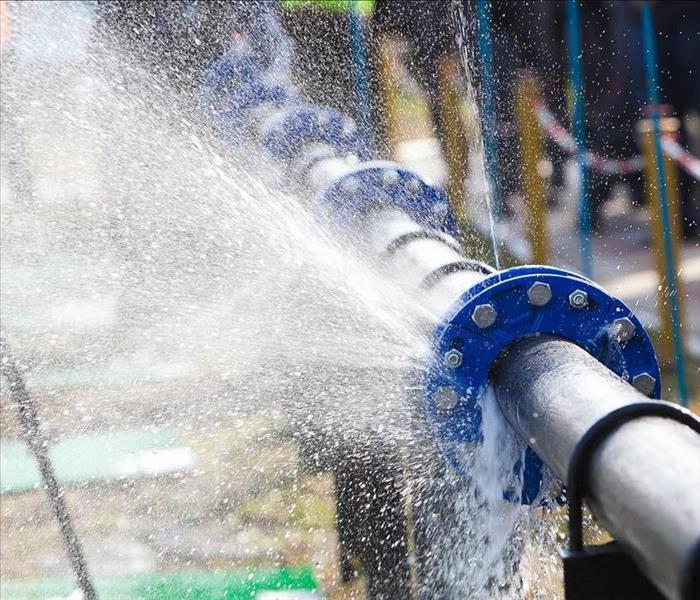 If you do experience a pipe break, you will likely be dealing with water damage
If you do experience a pipe break, you will likely be dealing with water damage
If your water pipes are making a banging noise, you are at risk of a pipe break and flooding. However, it is possible to stop the banging and keep your pipes from bursting.
What Causes Noisy Pipes?
There are several reasons your pipes might make a banging sound. The following are some of the most common:
- malfunctioning air chamber
- excessive water pressure
- loose pipes
The air chamber works to absorb the shock caused when a valve closes. If the air chamber does not work, the shock can cause the pipes to bang. Water pressure being too high can also lead to a banging sound. If the pipes are loose, they may be noisy even if the pressure within the pipes is not very high. All of these issues can stress the pipes and lead to damaged connectors, leaks, or even a pipe break.
How To Fix Noisy Pipes?
To avoid a pipe burst or other serious problem, it is important to address the cause of the banging sound. If the problem is a waterlogged air chamber, emptying the water from the plumbing system should clear out the air chamber and allow it to work properly again. If this does not work, try installing water hammer arrestors between the supply lines (both hot and cold) and the shut-off valve. In cases where the problem is caused by excessive water pressure, it is important to lower the pressure in the pipes. Many homes have a pressure reduction valve that can be adjusted to reach the optimal water pressure level. If your home does not have such a valve, you can ask your municipal water authority to check the pressure for you. If loose pipes are causing the banging, make sure the stabilizing straps are secure and that none are missing.
If you do experience a pipe break, you will likely be dealing with water damage in addition to having to fix a broken pipe. Fortunately, an experienced restoration company can help you get your Penndel, PA, home back to normal quickly and safely.
What Not To Do After a Flood
5/14/2020 (Permalink)
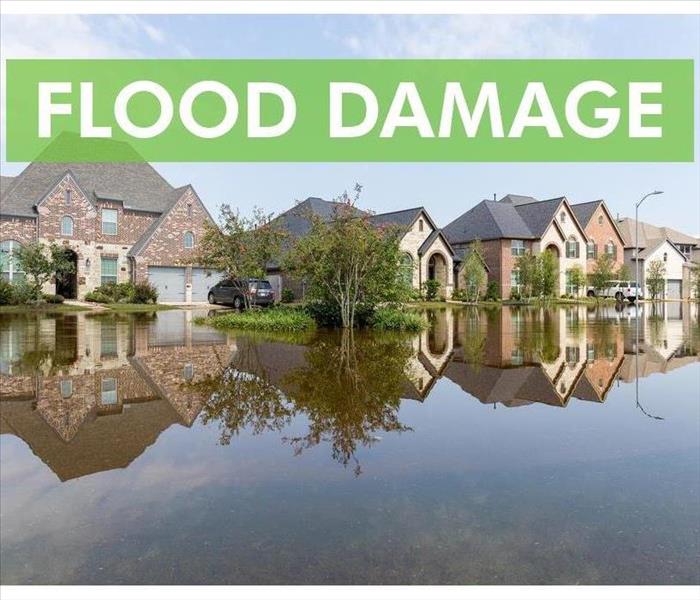 A local neighborhood flooded in Langhorne, PA
A local neighborhood flooded in Langhorne, PA
When floodwater invades your Langhorne/Bensalem, PA home, it can be overwhelming. Keeping a cool head is essential to a speedy recovery for your residence. Here are four things not to do after a flood.
- Don’t Refuse To Leave
From crunchy peanut butter to your favorite football team, there are plenty of things that are worth taking a stand for. Your flooded home is not one of them. It may be a cliché, but it’s true: Things can be replaced. People can’t. When the water starts to rise — and especially if officials order you to leave — get moving. Ride things out with friends or relatives, or stay at a hotel.
- Don’t Walk on Wet Carpet
Walking on carpeting that’s wet or completely underwater only forces the water deeper down and further afield from its point of origin. In order to prevent the spread of water and mold-causing contaminants below the surface, avoid carpeted rooms altogether if you can.
- Don’t Try To Vacuum Up the Flood Water
Your vacuum may be great at sucking up spilled pretzels or pet hair, but it’s not meant for water. At best, you can ruin your vacuum. At worst, you can subject yourself to an electrical shock.
- Don’t Try to Clean Up the Water Damage Yourself
After all members of your household are safe and sound, one of the first calls you should make is to a flood damage restoration company. Its technicians will have the tools and expertise required to safely return your home to normal.
Generally speaking, you can expect the company to come to your home, perform an assessment to determine the full extent of the damage, and clean and sanitize your home. Many companies also perform repairs.
It’s easy to make rash decisions in the face of floodwater. You may be tempted to hold firm despite repeated warnings or to start cleanup with whatever you have on hand. Ultimately, however, the best — and the safest — way to begin the recovery process is to exercise caution and leave the heavy lifting to the professionals.
How to Clean Category 3 Water Damage
5/5/2020 (Permalink)
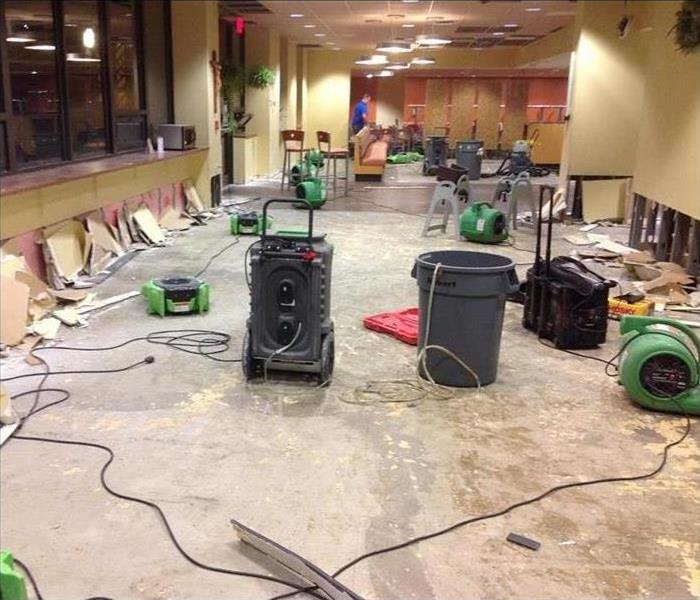 Drying a commercial building after water damage in Feasterville, PA
Drying a commercial building after water damage in Feasterville, PA
How to Clean Category 3 Water Damage
Flood water can leave your business in Feasterville, PA, inoperable. You need to get it cleaned and restored quickly to minimize lost revenue and impact on your customers. Since category 3 water is considered the most contaminated of all water sources, it is important to clean it correctly and minimize your exposure.
1. Identify the Source
Identifying where the water came from is usually a good first step in determining its potential for contaminants. Some common sources of category 3 water are a flood, a burst sewage line, and a toilet overflow.
2. Protect Yourself
This type of water can contain pathogens that may be harmful to human health such as viruses, bacteria, heavy metals, and environmental toxins. You should not make contact with the water. If you must, then you should wear protective clothing or gloves and wash with soap afterward.
3. Dry the Area
In the case of flood water, you will probably need someone with specialized equipment to extract the water. Professionals may use industrialized blowers to complete the drying process in as little time as possible.
4. Disinfect
Even after the water is gone, the area is still unsafe to enter because harmful substances can be left behind. If you are dealing with only a small area, like a bathroom floor, you could use a bleach solution to disinfect. However, larger areas will need the help of a professional with access to a variety of disinfectants and biocides.
5. Restore and Replace Damaged Items
Some materials may have sustained a considerable amount of damage and may need to be replaced. Carpet that has been submerged could need to be pulled up and replaced or new drywall might need to be installed.
Returning your business to normal after flood water damage involves more than just wiping up the water. By working with a professional restoration company, you can have your building restored as quickly and safely as possible.
Here to Help 24/7
4/13/2020 (Permalink)
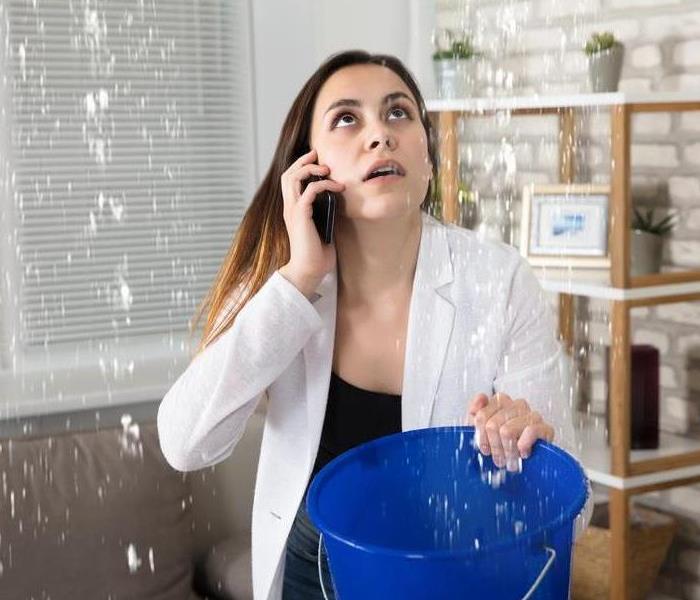 SERVPRO of Langhorne/Bensalem is available 24 hours a day for water emergencies, even on weekends and holidays!
SERVPRO of Langhorne/Bensalem is available 24 hours a day for water emergencies, even on weekends and holidays!
SERVPRO of Langhorne/Bensalem is available 24 hours a day for water emergencies, even on weekends and holidays! When you are dealing with water damage, immediate action is critical. Delays can greatly increase the severity of the water damage, causing increase in repair costs and extending the time it takes to repair.
We know that when you call for our services, you may be feeling overwhelmed. You need industry experts to guide you through the restoration process. SERVPRO of Langhorne/Bensalem has the certified training and industry experience to help you through this difficult time.
We are by the phone ready to respond, 24 hours a day, 7 days a week- call 215-600-1497 today! We'll make it "Like it never even happened."
Water Heater Leak
2/5/2020 (Permalink)
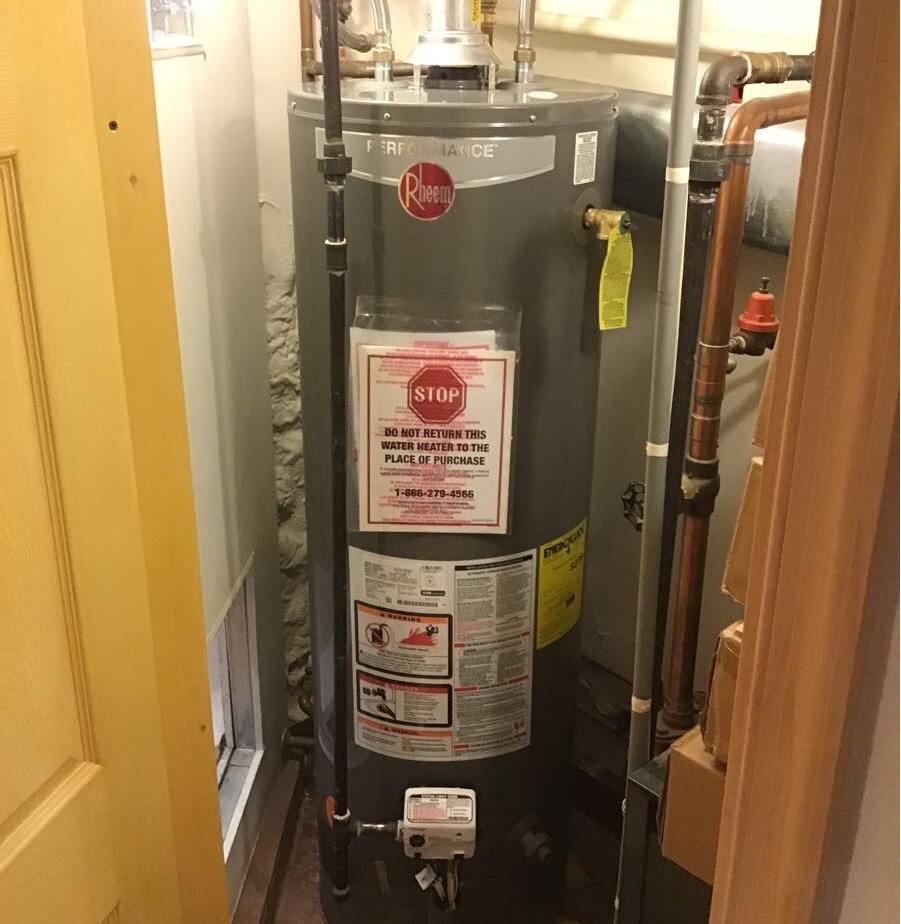 This water heater caused severe damage to this homeowner's finished basement
This water heater caused severe damage to this homeowner's finished basement
It always happens when least expected...you're about to clean dishes and the water won't warm up, or you're about to shower and the water is freezing! Hopefully, these are fixed by an easy repair to your water heater. Unfortunately, sometimes, these issues could mean you have a leaking water heater that needs to be replaced.
Sometimes you'll go into your utility room and see a foot of standing water from the leaking water heater! Other times, it might just be a small puddle or damp carpet near the water heater. Either way, elevated moisture within a dwelling could lead to mold colonization if the moisture level is not corrected by professionals. Don't let your property's value decline due to something as simple as a leaky water heater! Call SERVPRO and let us restore your property right away!
Carpet Catastrophe
7/1/2019 (Permalink)
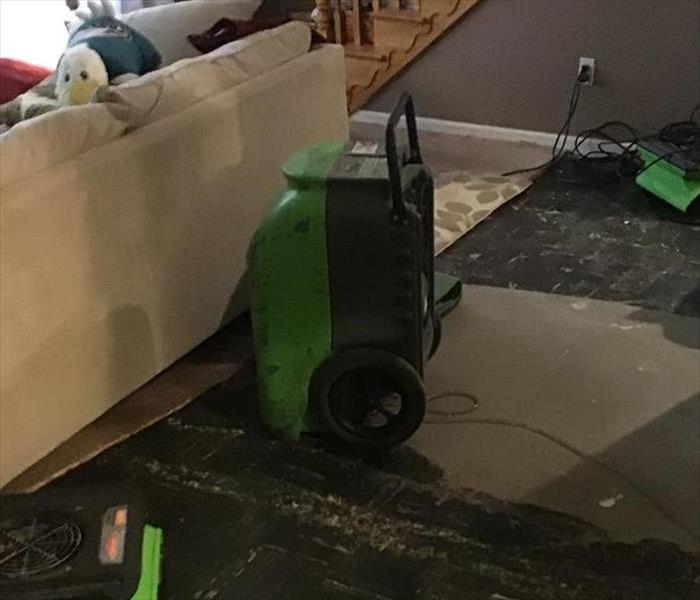 Carpet damage from water
Carpet damage from water
Here's an example of a water damage job that our team got called in for this past week. With all the flooding we've been having our client had a leak in the roof and ended up leaving it until another storm happened. Unfortunately, their entire living room carpet had to be ripped up because the issue wasn't tended to initially. Please never feel afraid or wait too long to call SERVPRO. With these months of lots of rain, we don't want to make flooding more of a hassle than it already is in some peoples' homes. We offer free estimates and our goal is to make you feel as comfortable in your home, while we get done the job as quick as possible.
Water Damage to Furniture and more...
6/20/2019 (Permalink)
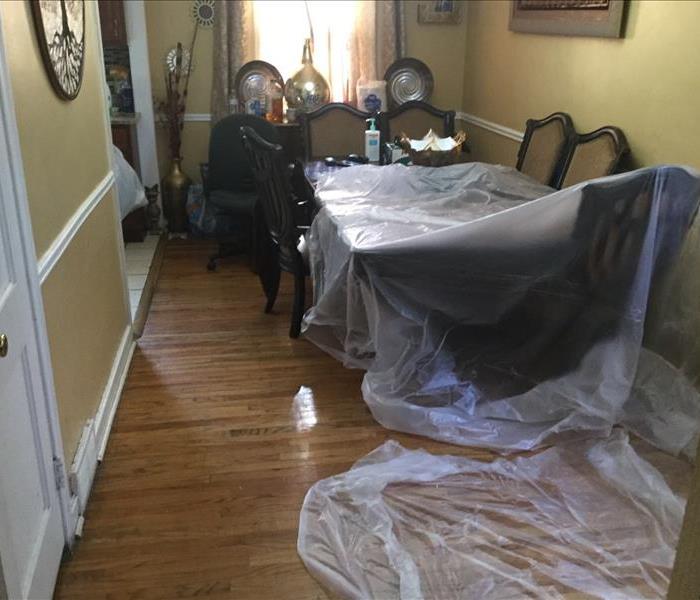 Couch water damage in living room
Couch water damage in living room
On the regular, we tend to residential homes that have water damage to their furniture. In this case, we were brought in to salvage a couch and the surrounding floor area in the living room due to water leakage from upstairs and through the roof. When we hurry in to take care of a job, we always make sure that the customer is okay with what we are doing. We walk you through the process because we want you to feel as comfortable in your home as possible while we are in there taking care of things. If you, yourself, or someone you know is experiencing water damage in their home currently, please don't hesitate to call us here at SERVPRO. We're here to help and make your life less stressful!
Closet in Apartment Complex
4/2/2019 (Permalink)
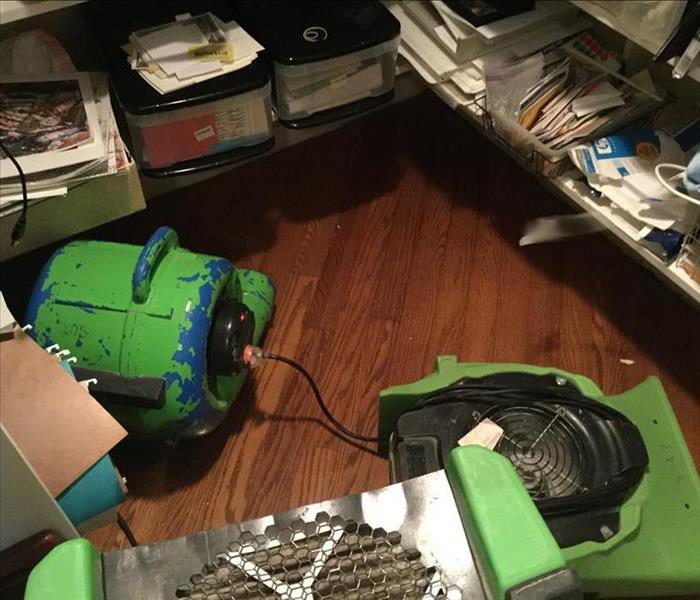 Closet Water Damage
Closet Water Damage
Here is an example of of a closet we got called into with water damage. Unfortunately, due to the many storms we've been having more than one closet was ruined in various apartments. The complex thought it would be a good idea to call us in after the facilities team tried cleaning them themselves countless times. In hopes to save themselves time--we were told that we were the first company they thought of since we have done some water and mold remediation and damage in past. The job took about a total of three days to air everything and complete the job in full. Luckily, there was no mold damage this time so our team got the job done very quickly without disturbing all of the residents too much.
Basement Disaster
3/7/2019 (Permalink)
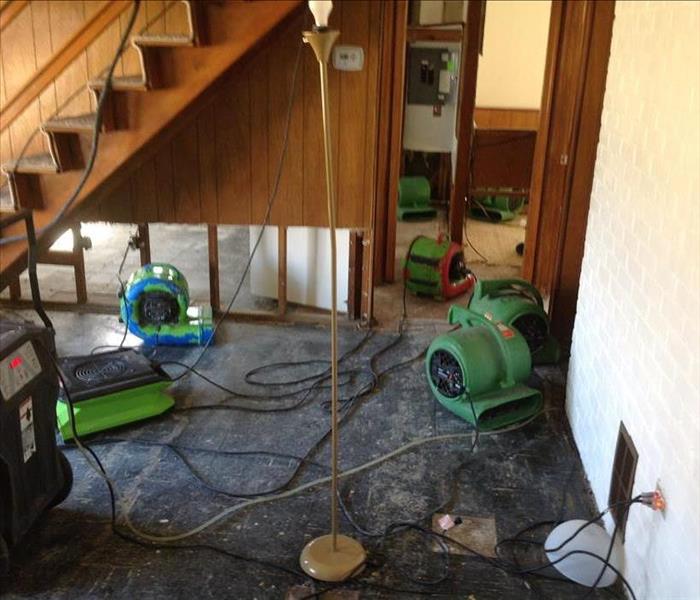 Water damage behind basement walls
Water damage behind basement walls
We had a call here at SERVPRO this week for water damage in a clients' basement over the weekend. The upstairs toilet leaked and unfortunately leaked through the entire floor. If it wasn't enough as it was that our clients' furniture was damaged, his basement floor and walls had sever water damage as well. He knew he wouldn't be able to take care of the issue himself, so he decided to call us right away. Our client didn't think twice about calling us since he had used our services before when he had a fire in his kitchen upstairs. He knew we'd be a reliable source and get the job done efficiently. He said he will be referring us out to family and friends in the future if another problem arises.
Water Damage (triplex)
3/6/2019 (Permalink)
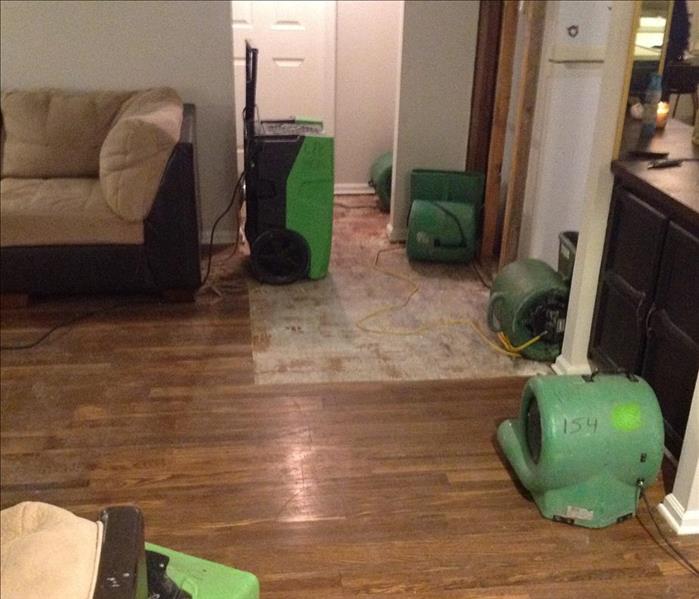 Ground level of water damage to entire triplex
Ground level of water damage to entire triplex
Here is an example of a call we received about water damage done at triplex building. There was a water leak on the third floor, which ended up seeping down and affecting the two units below it as well. The pictures shown here are on the ground floor. The water went through the living room, kitchen, and hallway. Due to this affecting so many properties, it was clear to the landlord that he needed to call SERVPRO right away. He mentioned when he spoke with us, he was overwhelmed with what had happened and was very happy he decided to call our office. The help allowed him to put his mind at ease and know that the damage would be fixed very quickly and efficiently.
Township Sewer Backup
1/18/2019 (Permalink)
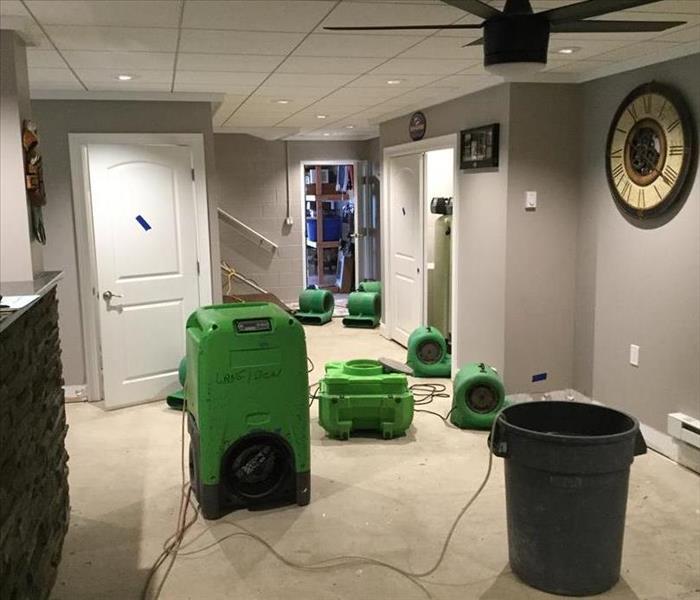 Sewage Backup Into Basement
Sewage Backup Into Basement
Here is an example of a severe water damage job SERVPRO was called in to attend to in a nearby community. This family's basement had water leak into their house damaging most of the basement and their belongings in it. Responding quickly to the scene, the job in its' entirety lasted a total of 4 days. The homeowners were more than impressed with how fast we handled the situation. Throughout the entire process SERVPRO was there to answer any questions and concerns about the situation. We at SERVPRO strongly believe that our clients should be as comfortable as possible at all times in their own home. Being a voice of reason, and reliable source we assured this client in particular that we would not disappoint.
What should I do until help arrives?
4/5/2018 (Permalink)
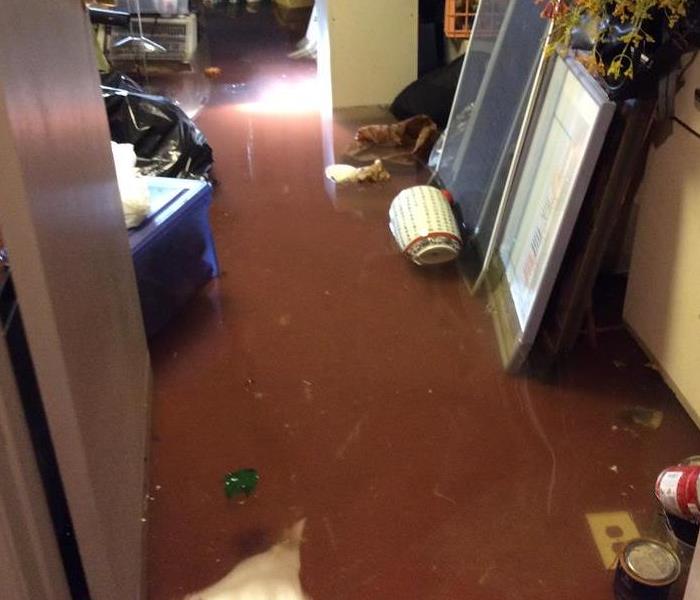 A flooded basement leaving contents drifting in the water
A flooded basement leaving contents drifting in the water
You never expect it when a water damage wreaks havoc on your home. The water damage clean up can be a headache so you always want to be prepared. Here are 5 tips to help you recover quickly when a water damages your property. 1. Find the source of the water damage. It's easy to find a faucet left running or sewer backup. However, if water is coming from a hidden pipe in the walls you need to shut off water to the house as quickly as possible. 2. After the panic has settled down, assess the level of damage to your home. There are some steps you can take to remove the water from your house, but if carpeting, drywall, rugs or other structural damage has occurred, call a professional water restoration company like SERVPRO of Langhorne/Bensalem immediately. 3. Move Quickly! You need to start mitigating the damage before more damage piles up. Bacteria and hazardous mold spores can begin to grow within hours of the catastrophe. 4. Use a shop-vac to remove as much water as possible until the professionals show up. The longer the water sits on the floor, the more damage it will create. Move quickly to remove as much water as possible. 5. Take photos for your insurance claim. Your insurance company will probably send out someone to investigate the damage, but if you have pictures that show everything as it happened, it could smooth out the claims process. Of course, the best kind of water damage is the one that never happens, but if you do ever find yourself in need, the professionals at SERVPRO of Langhorne/Bensalem are here to help you 24/7.
I have experienced a Water Damage- What Now?
3/28/2017 (Permalink)
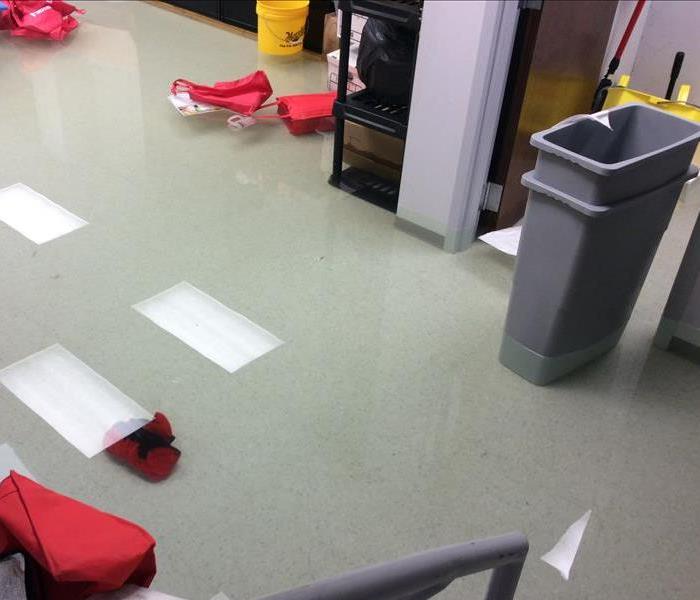 Standing water in a basement after water damage
Standing water in a basement after water damage
You never expect it when a water damage wreaks havoc on your home. The water damage clean up can be a headache so you always want to be prepared. Here are 5 tips to help you recover quickly when a water damages your property. 1. Find the source of the water damage. It's easy to find a faucet left running or sewer backup. However, if water is coming from a hidden pipe in the walls you need to shut off water to the house as quickly as possible. 2. After the panic has settled down, assess the level of damage to your home. There are some steps you can take to remove the water from your house, but if carpeting, drywall, rugs or other structural damage has occurred, call a professional water restoration company like SERVPRO of Langhorne/Bensalem immediately. 3. Move Quickly! You need to start mitigating the damage before more damage piles up. Bacteria and hazardous mold spores can begin to grow within hours of the catastrophe. 4. Use a shop-vac to remove as much water as possible until the professionals show up. The longer the water sits on the floor, the more damage it will create. Move quickly to remove as much water as possible. 5. Take photos for your insurance claim. Your insurance company will probably send out someone to investigate the damage, but if you have pictures that show everything as it happened, it could smooth out the claims process. Of course, the best kind of water damage is the one that never happens, but if you do ever find yourself in need, the professionals at SERVPRO of Langhorne/Bensalem are here to help you 24/7.






 24/7 Emergency Service
24/7 Emergency Service